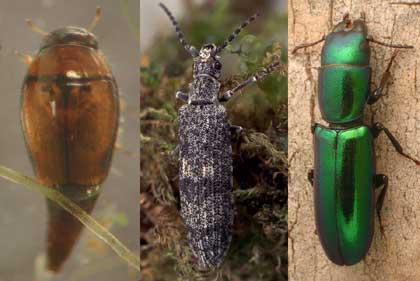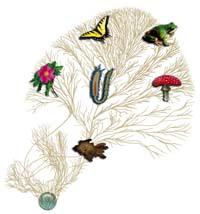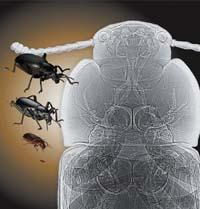Clarifying the evolution of beetles
2008/01/03 Lakar Iraizoz, Oihane - Elhuyar Zientzia

In the world there are more than 350,000 species of beetles, living almost everywhere, if some are not others. All of them are grouped in one group, with a protective cover for the wings. From there, it is much more difficult to typify all species known in groups, pair them with each other, and determine when they separated from each other.
Alfried Vogler and its members worked on this work. To do this, DNA sequences of already decoded cocoa species have been compared. They have sought similarities and differences in sequences and have created the family tree of beetles. In addition to the collected species, the DNA of other seven hundred species has been analyzed in order to cover the holes of the tree under construction. In total, they have made the tree with 1,900 species of beetle.
Using DNA sequences for this type of classifications is something new. Until recently the morphological characteristics of living beings were used. And the truth is that there are no big differences between the classification that this group has made and that which already existed.
However, this research has contributed that, thanks to the new way of classifying, they have been able to know when groups were separated from each other, approximately. And yes, it has eliminated an idea that until now was considered true. Until now it was thought that the cultivation of flowering plants increased later, as they offered them a lot of food supplies and accommodation. However, the data obtained in the research shows that by the time flowering plants began to proliferate, there were already more than one hundred groups of beetles. That is, one has not been the result of the other.
Photo: David R. Maddison

Gai honi buruzko eduki gehiago
Elhuyarrek garatutako teknologia






